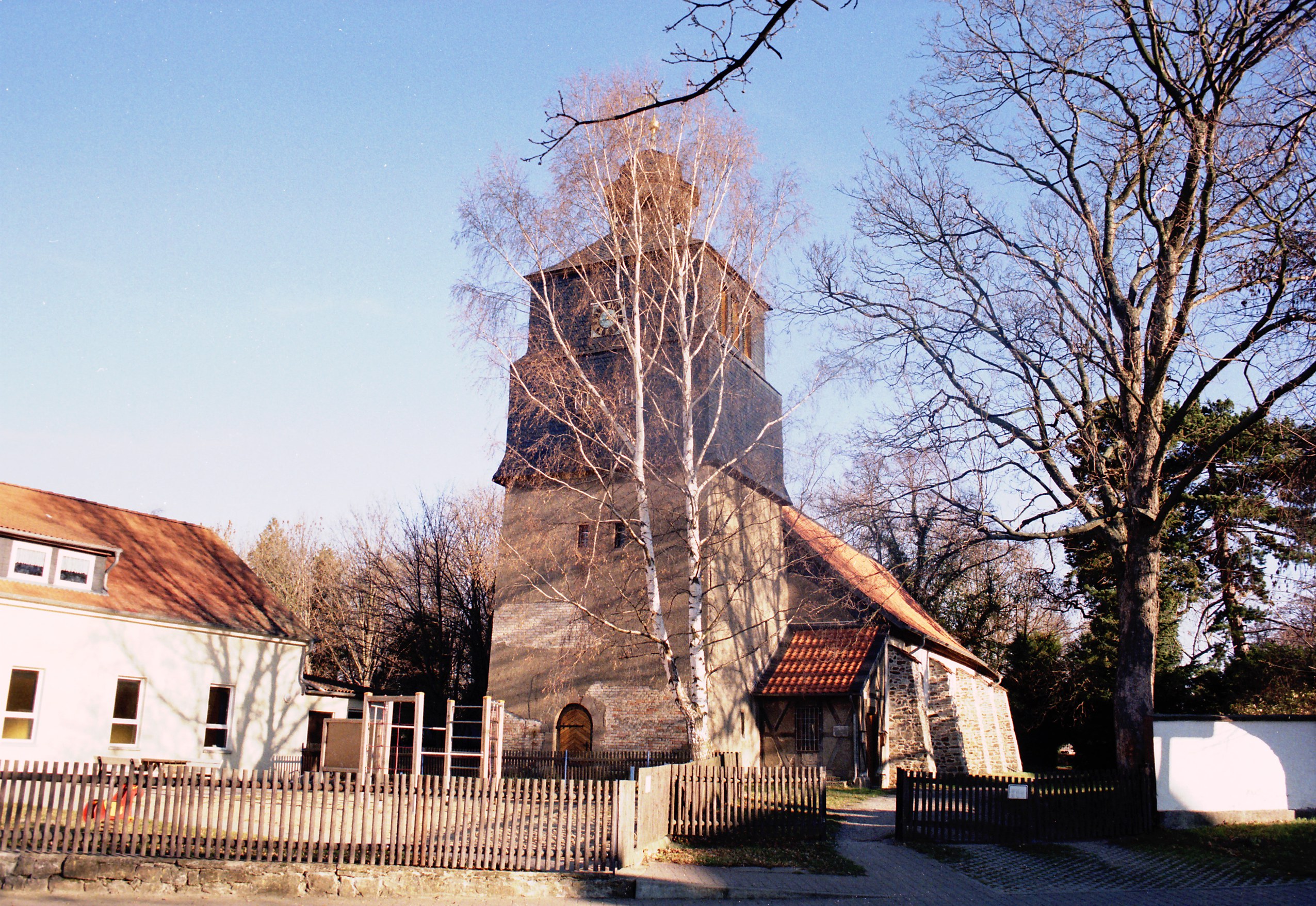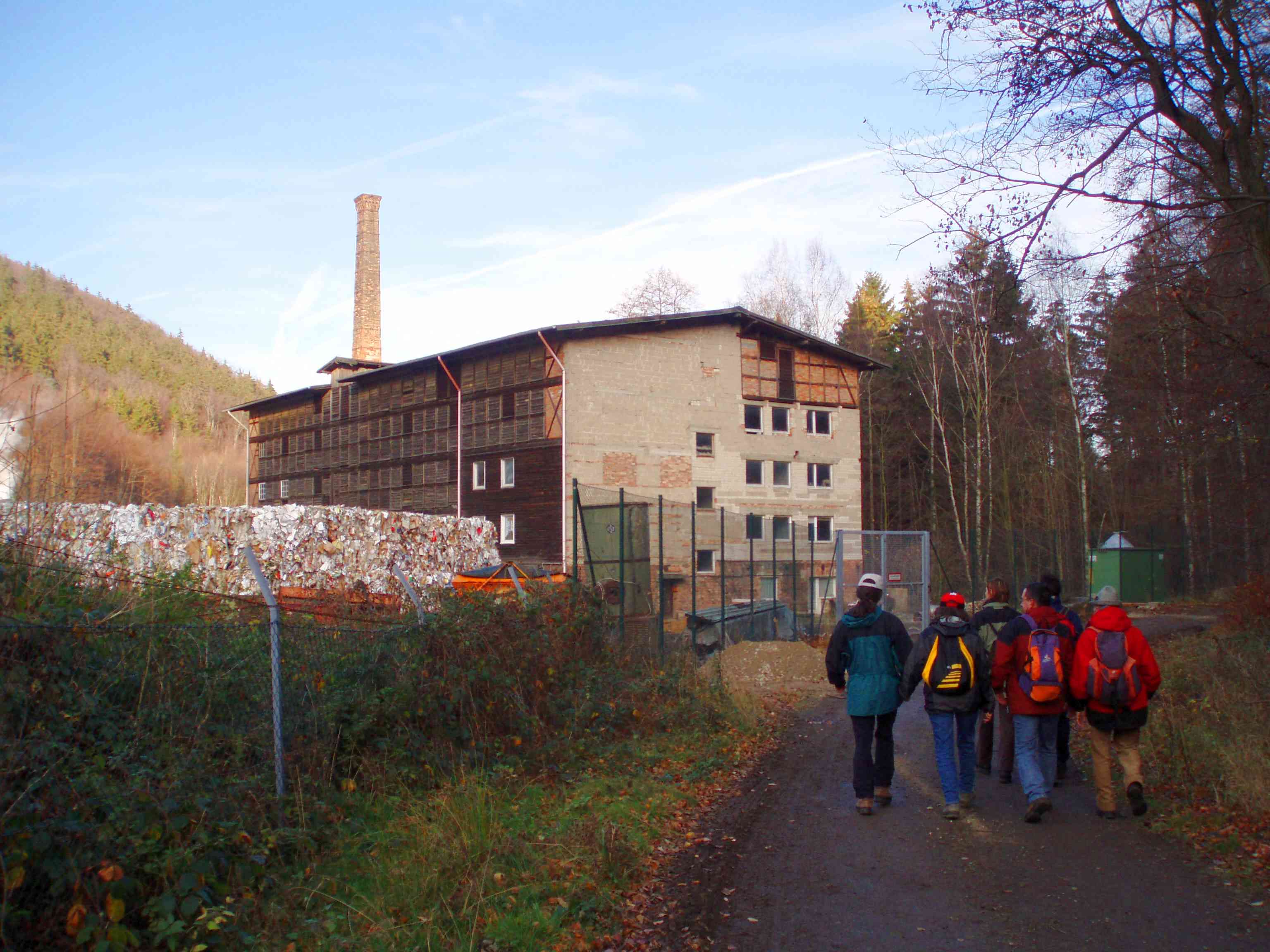|
Abbenrode
Abbenrode is a village and a former municipality in the district of Harz, in Saxony-Anhalt, Germany. Since 1 January 2010, it has been part of the municipality of Nordharz. The village is situated north of the Harz mountain range, near the Ecker creek and the border with the state of Lower Saxony. The Abbenrode manor, possibly named after a first settler called ''Abbo'', arose in the medieval Duchy of Saxony and was first mentioned as ''Abbenrot'' in an 1129 deed issued by King Lothair III of Germany. About 1145 Bishop Rudolf of Halberstadt established a monastery of Benedictine nuns here. His foundation received the confirmation by Pope Eugene III in 1148. The abbey was devastated during the 1525 German Peasants' War and finally dissolved under the rule of the Protestant Halberstadt administrator Sigismund of Brandenburg in 1554. The present-day parish church, dedicated to Saint Andrew, was consecrated in 1575. After World War II World War II or the Second W ... [...More Info...] [...Related Items...] OR: [Wikipedia] [Google] [Baidu] |
Ecker
The Ecker is a , right-hand, southeast tributary of the Oker which runs mainly through the Harz mountains in the German states of Saxony-Anhalt and Lower Saxony. Course From its source to Abbenrode the Ecker is a border river, today running between the federal states of Saxony-Anhalt and Lower Saxony. Prior to German reunification this was also the border between the German Democratic Republic in the east and Federal Republic of Germany to the west. The Ecker rises around southwest of the Brocken at at the ''Eckersprung''. Until the border was reopened it was the end of the Goethe Way (''Goetheweg'') from Torfhaus. Today there is a large picnic area with toilets at the ''Eckersprung''. Along a steep, rocky bed, the Ecker initially flows to the Ecker Dam, then through the deeply incised Ecker valley towards the north-northeast, where it passes the Ahlsburg, and then leaves the Harz. The upper Ecker valley is part of the Harz National Park. Only the site of the paper facto ... [...More Info...] [...Related Items...] OR: [Wikipedia] [Google] [Baidu] |
Nordharz
Nordharz (literally "North Harz") is a municipality in the district of Harz, in Saxony-Anhalt, Germany. The municipal area consists of eight ''Ortschaften'' or municipal divisions:Hauptsatzung der Gemeinde Nordharz September 2020. * * * Heudeber * Langeln * [...More Info...] [...Related Items...] OR: [Wikipedia] [Google] [Baidu] |
Order Of Saint Benedict
The Benedictines, officially the Order of Saint Benedict ( la, Ordo Sancti Benedicti, abbreviated as OSB), are a Christian monasticism, monastic Religious order (Catholic), religious order of the Catholic Church following the Rule of Saint Benedict. They are also sometimes called the Black Monks, in reference to the colour of their religious habits. They were founded by Benedict of Nursia, a 6th-century monk who laid the foundations of Benedictine monasticism through the formulation of his Rule of Saint Benedict. Despite being called an order, the Benedictines do not operate under a single hierarchy but are instead organised as a collection of autonomous monasteries. The order is represented internationally by the Benedictine Confederation, an organisation set up in 1893 to represent the order's shared interests. They do not have a superior general or motherhouse with universal jurisdiction, but elect an Abbot Primate to represent themselves to the Holy See, Vatican and to the worl ... [...More Info...] [...Related Items...] OR: [Wikipedia] [Google] [Baidu] |
German Reunification
German reunification (german: link=no, Deutsche Wiedervereinigung) was the process of re-establishing Germany as a united and fully sovereign state, which took place between 2 May 1989 and 15 March 1991. The day of 3 October 1990 when the German Reunification Treaty entered into force dissolving the German Democratic Republic (GDR; german: link=no, Deutsche Demokratische Republik, DDR, or East Germany) and integrating its recently re-established constituent federated states into the Federal Republic of Germany (FRG; german: link=no, Bundesrepublik Deutschland, BRD, or West Germany) to form present-day Germany, has been chosen as the customary ''German Unity Day'' () and has thereafter been celebrated each year from 1991 as a national holiday. East and West Berlin were united into a single city and eventually became the capital of reunited Germany. The East Germany's government led by the Socialist Unity Party of Germany (SED) (a communist party) started to falter on 2 May 1 ... [...More Info...] [...Related Items...] OR: [Wikipedia] [Google] [Baidu] |
Inner-German Border
The inner German border (german: Innerdeutsche Grenze or ; initially also ) was the border between the German Democratic Republic (GDR, East Germany) and the West Germany, Federal Republic of Germany (FRG, West Germany) from 1949 to 1990. Not including the similar and physically separate Berlin Wall, the border was long and ran from the Baltic Sea to Czechoslovakian border fortifications during the Cold War, Czechoslovakia. It was established on 1July 1945 (formally by Potsdam Agreement) as the boundary between the Allied-occupied Germany, Western and Soviet occupation zones of former Nazi Germany. On the eastern side, it was made one of the world's most heavily fortified frontiers, defined by a continuous line of high metal border barrier, fences and walls, barbed wire, alarms, anti-vehicle ditches, watchtowers, automatic booby traps, and minefields. It was patrolled by fifty thousand armed East German guards who faced tens of thousands of West German, British, and U.S. guard ... [...More Info...] [...Related Items...] OR: [Wikipedia] [Google] [Baidu] |
World War II
World War II or the Second World War, often abbreviated as WWII or WW2, was a world war that lasted from 1939 to 1945. It involved the vast majority of the world's countries—including all of the great powers—forming two opposing military alliances: the Allies and the Axis powers. World War II was a total war that directly involved more than 100 million personnel from more than 30 countries. The major participants in the war threw their entire economic, industrial, and scientific capabilities behind the war effort, blurring the distinction between civilian and military resources. Aircraft played a major role in the conflict, enabling the strategic bombing of population centres and deploying the only two nuclear weapons ever used in war. World War II was by far the deadliest conflict in human history; it resulted in 70 to 85 million fatalities, mostly among civilians. Tens of millions died due to genocides (including the Holocaust), starvation, ma ... [...More Info...] [...Related Items...] OR: [Wikipedia] [Google] [Baidu] |
Sigismund Of Brandenburg
Sigismund of Brandenburg (1538–1566) was Prince-Archbishop of Magdeburg and Administrator of the Prince-Bishopric of Halberstadt. Life Sigismund was born on 11 December 1538 in Cölln; the son of the Elector of Brandenburg, Joachim II (1505–1571), from his second marriage to Hedwig (1513–1572), daughter of King Sigismund I of Poland and the Hungarian Countess Barbara Zápolya. Sigismund owed not only his name, but also a close resemblance to his grandfather. Sigismund succeeded his elder brother, Frederick, in 1552 as prince-archbishop of Magdeburg and diocesan administrator of the Prince-Bishopric of Halberstadt. The administration of the Halberstadt see had been combined with the Magdeburg see since 1480. Because he was only 14 it was initially suggested that the Magdeburg Cathedral chapter could not elect him, so he was postulated. Until 1557, when he came of age, Count John George of Mansfeld was installed by the cathedral chapter to run the prince-archbishopric. ... [...More Info...] [...Related Items...] OR: [Wikipedia] [Google] [Baidu] |
Protestant Reformation
The Reformation (alternatively named the Protestant Reformation or the European Reformation) was a major movement within Western Christianity in 16th-century Europe that posed a religious and political challenge to the Catholic Church and in particular to papal authority, arising from what were perceived to be errors, abuses, and discrepancies by the Catholic Church. The Reformation was the start of Protestantism and the split of the Western Church into Protestantism and what is now the Roman Catholic Church. It is also considered to be one of the events that signified the end of the Middle Ages and the beginning of the early modern period in Europe.Davies ''Europe'' pp. 291–293 Prior to Martin Luther, there were many earlier reform movements. Although the Reformation is usually considered to have started with the publication of the '' Ninety-five Theses'' by Martin Luther in 1517, he was not excommunicated by Pope Leo X until January 1521. The Diet of Worms of May 1521 ... [...More Info...] [...Related Items...] OR: [Wikipedia] [Google] [Baidu] |
German Peasants' War
The German Peasants' War, Great Peasants' War or Great Peasants' Revolt (german: Deutscher Bauernkrieg) was a widespread popular revolt in some German-speaking areas in Central Europe from 1524 to 1525. It failed because of intense opposition from the aristocracy, who slaughtered up to 100,000 of the 300,000 poorly armed peasants and farmers. The survivors were fined and achieved few, if any, of their goals. Like the preceding Bundschuh movement and the Hussite Wars, the war consisted of a series of both economic and religious revolts in which peasants and farmers, often supported by Anabaptist clergy, took the lead. The German Peasants' War was Europe's largest and most widespread popular uprising before the French Revolution of 1789. The fighting was at its height in the middle of 1525. The war began with separate insurrections, beginning in the southwestern part of what is now Germany and Alsace, and spread in subsequent insurrections to the central and eastern areas of Ge ... [...More Info...] [...Related Items...] OR: [Wikipedia] [Google] [Baidu] |
Pope Eugene III
Pope Eugene III ( la, Eugenius III; c. 1080 – 8 July 1153), born Bernardo Pignatelli, or possibly Paganelli, called Bernardo da Pisa, was head of the Catholic Church and ruler of the Papal States from 15 February 1145 to his death in 1153. He was the first Cistercian to become pope. In response to the fall of Edessa to the Muslims in 1144, Eugene proclaimed the Second Crusade. The crusade failed to recapture Edessa, which was the first of many failures by the Christians in the crusades to recapture lands won in the First Crusade. He was beatified in 1872 by Pope Pius IX. Early life Bernardo was born in the vicinity of Pisa. Little is known about his origins and family except that he was son of a certain Godius. From the 16th century he is commonly identified as member of the family of Paganelli di Montemagno, which belonged to the Pisan aristocracy, but this has not been proven and contradicts earlier testimonies that suggest he was a man of rather humble origins. In 1106 ... [...More Info...] [...Related Items...] OR: [Wikipedia] [Google] [Baidu] |
Bishopric Of Halberstadt
The Diocese of Halberstadt was a Roman Catholic diocese (german: Bistum Halberstadt) from 804 until 1648."Diocese of Halberstadt" ''''. David M. Cheney. Retrieved February 29, 2016"Diocese of Halberstadt" ''GCatholic.org''. Gabriel Chow. Retrieved February 29, 2016 From 1180, the bishops or administrators of Halberstadt ruled a state within the |
Harz (district)
Harz is a district in Saxony-Anhalt, Germany. Its area is . History The district was established by merging the former districts of Halberstadt, Wernigerode and Quedlinburg as well as the city of Falkenstein (from the district of Aschersleben-Staßfurt) as part of the reform of 2007. Towns and municipalities The district Harz consists of the following subdivisions: See also *Ilsenburg (Verwaltungsgemeinschaft) Ilsenburg (Harz) was a ''Verwaltungsgemeinschaft'' ("collective municipality") in the district of Harz, in Saxony-Anhalt, Germany. The seat of the ''Verwaltungsgemeinschaft'' was in Ilsenburg. It was disbanded in July 2009. The ''Verwaltungsgemei ... References Districts of Saxony-Anhalt Harz {{Harz-geo-stub ... [...More Info...] [...Related Items...] OR: [Wikipedia] [Google] [Baidu] |





.jpg)


